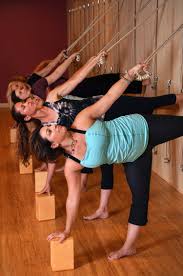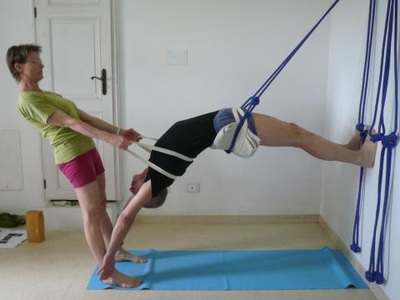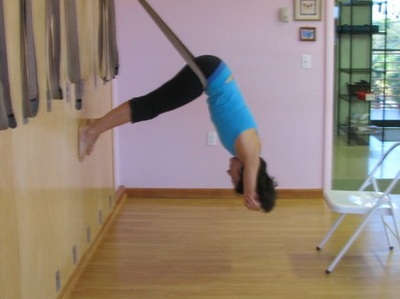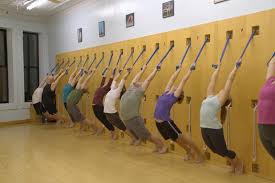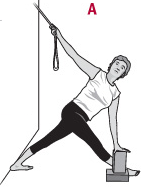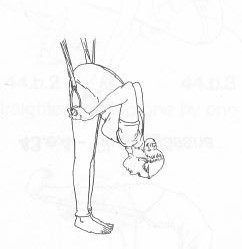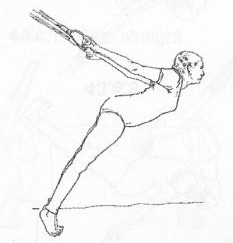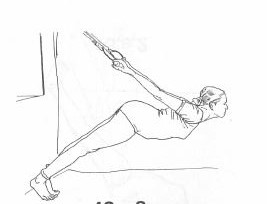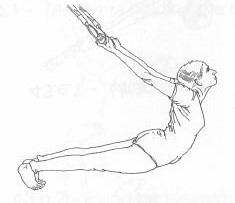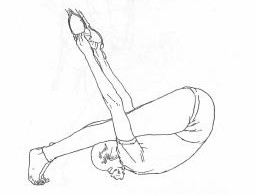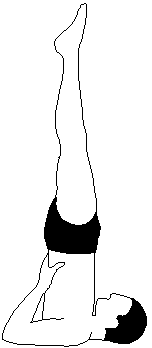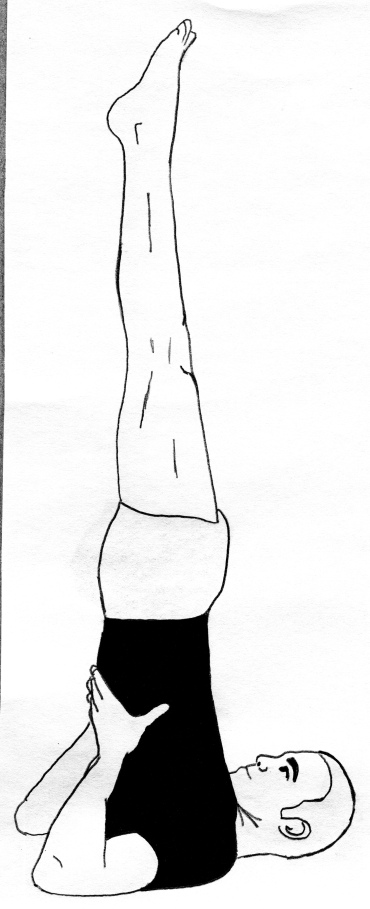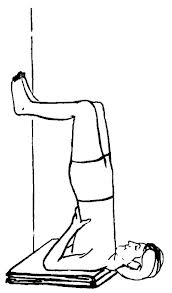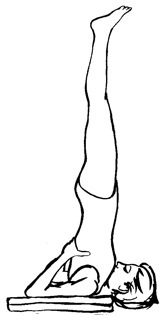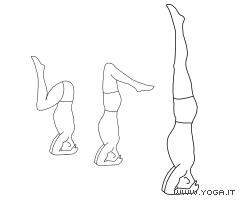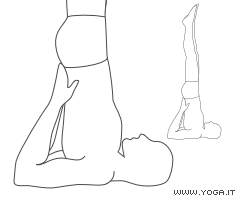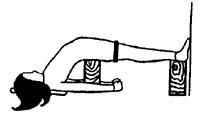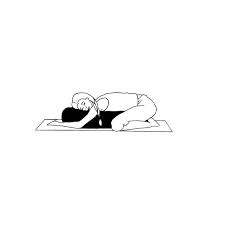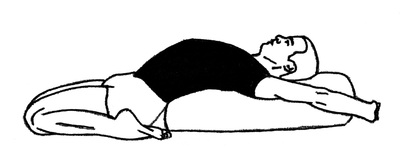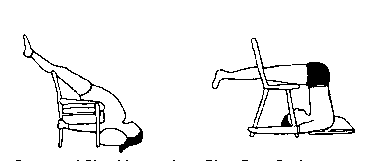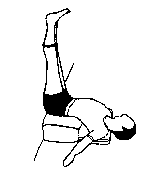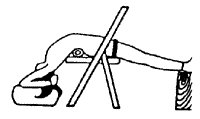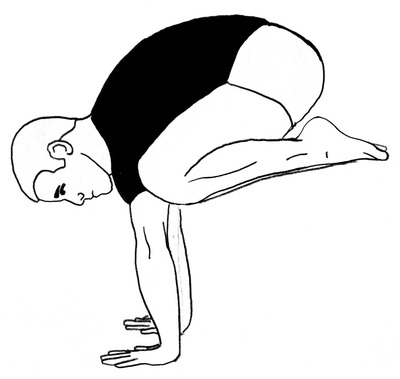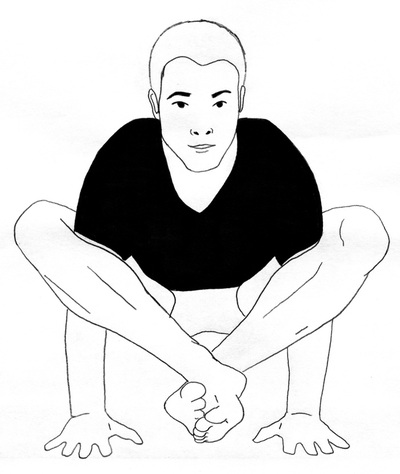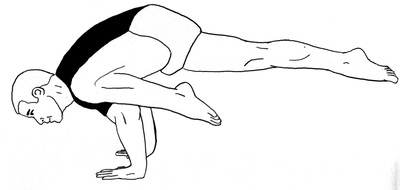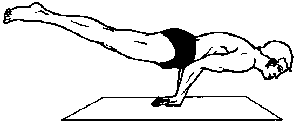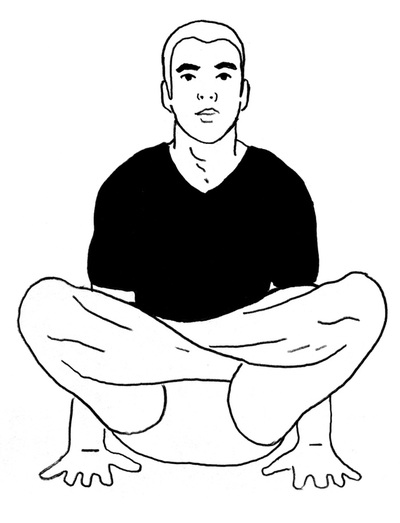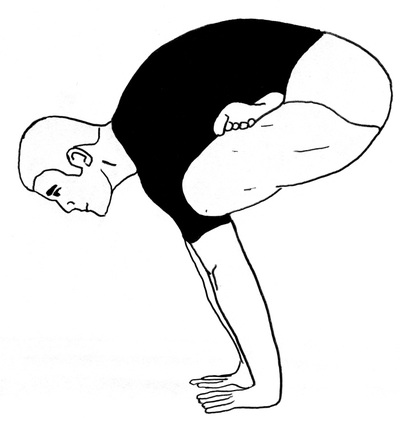6 workshop for 6 weeks
15-21/12/2014
1) Introduction at Iyengar Yoga and special focus on standing poses: the base on whitch build a effective yoga practice
Yoga is termed a self study (Svadhyaya) and is the journey of learning to practice so that we might study and come to understand ourselves. Iyengar Yoga applies specific methodology to two of the eight limbs of Yoga: asana and pranayama. Through disciplined practice these two limbs become instruments of a contemplative science, for this reason the focus is ‘practice based learning’.
The key methods of practice within Iyengar Yoga, including technique, timings, sequence and repetition are introduced through the practice of asana (physical postures). Through the practice of asana students begin to explore the body, mind and breath as relational forces and instruments of meditation.
When one is new to yoga one begins first with the standing poses. The standing asanas are called 'Uttistha sthiti'. They introduce the student to herself. The student begins to discover the interconnectedness of the body. Often times a beginner knows where his big toe is on his body, but does not know his big toe on an intimate level. That is to say, there is no connection between the big toe and the mind. The student may 'will' the toe to move, but it is asleep.
The student begins to learn how an adjustment of the shoulder blades corresponds to the front body and lifting of the chest. He/she begins to blossom and open up literally, as hands and feet spread wide apart the student learns that his limbs can actually move: contract, extend, expand, abduct, adduct, rotate and circumduct!
The standing poses include all the movements of the spine, such as "horizontal, vertical and lateral elongation as well as extension along with sideways, forward, backward extensions, and twisting. Thus, the standing asanas becomes the foundation for the rest of the asanas!
The key methods of practice within Iyengar Yoga, including technique, timings, sequence and repetition are introduced through the practice of asana (physical postures). Through the practice of asana students begin to explore the body, mind and breath as relational forces and instruments of meditation.
When one is new to yoga one begins first with the standing poses. The standing asanas are called 'Uttistha sthiti'. They introduce the student to herself. The student begins to discover the interconnectedness of the body. Often times a beginner knows where his big toe is on his body, but does not know his big toe on an intimate level. That is to say, there is no connection between the big toe and the mind. The student may 'will' the toe to move, but it is asleep.
The student begins to learn how an adjustment of the shoulder blades corresponds to the front body and lifting of the chest. He/she begins to blossom and open up literally, as hands and feet spread wide apart the student learns that his limbs can actually move: contract, extend, expand, abduct, adduct, rotate and circumduct!
The standing poses include all the movements of the spine, such as "horizontal, vertical and lateral elongation as well as extension along with sideways, forward, backward extensions, and twisting. Thus, the standing asanas becomes the foundation for the rest of the asanas!
22-28/12/2014
2) Yoga Kurunta
Yoga Asanas can be practiced with the aid of ropes on the wall.
In Section VIII of Geeta Iyengar's Yoga: A Gem For Women on 'Yoga Kurunta' she explains: 'Kuranti is a puppet, a doll made of wood". In Yoga Kurunta one learns to manipulate oneself in the various Yoga postures by means of a suspended rope as if one were a puppet. Here the puppeteer and the puppet are one, performing their own puppet show.'
When we use the ropes on the Yoga rope wall, we become like puppets suspended by ropes. There are many uses of the ropes to aid us in our asana practice. We can use the ropes to become more aware of our alignment in our poses and to help open areas of the body that might be difficult for us to reach without the use of the ropes. The ropes can also be used as extra support and to stretch and strengthen specific areas of the body.
In this workshop we will explore deeper practice through a variety of poses using the wall ropes. With this aid you will experience how to open the joints, lengthen the spine and strengthen the core of your body. Standing poses to build strength, flexibility and balance; inversions to calm the mind, strengthen the endocrine system, improve circulation; back bends to improve heart function.
The rope wall is for all levels and for all ages to feel, experience, and to find some fun in our Yoga practice!
In Section VIII of Geeta Iyengar's Yoga: A Gem For Women on 'Yoga Kurunta' she explains: 'Kuranti is a puppet, a doll made of wood". In Yoga Kurunta one learns to manipulate oneself in the various Yoga postures by means of a suspended rope as if one were a puppet. Here the puppeteer and the puppet are one, performing their own puppet show.'
When we use the ropes on the Yoga rope wall, we become like puppets suspended by ropes. There are many uses of the ropes to aid us in our asana practice. We can use the ropes to become more aware of our alignment in our poses and to help open areas of the body that might be difficult for us to reach without the use of the ropes. The ropes can also be used as extra support and to stretch and strengthen specific areas of the body.
In this workshop we will explore deeper practice through a variety of poses using the wall ropes. With this aid you will experience how to open the joints, lengthen the spine and strengthen the core of your body. Standing poses to build strength, flexibility and balance; inversions to calm the mind, strengthen the endocrine system, improve circulation; back bends to improve heart function.
The rope wall is for all levels and for all ages to feel, experience, and to find some fun in our Yoga practice!
05-11/01/2015
3) Sirsasana and Sarvangasana as “father and mother”
- Headstand and Shoulderstand are considered by Mr Iyengar as the centrepieces of yoga practice. They are somewhat quaintly referred to as “father and mother” of the asanas and the ones that should be always practiced.
- preparation for Sirsasana and Sarvangasana
- execution of Sirsasana and Sarvangasana
- the variations in Sirsasana and Sarvangasana; the cicle of Sirsasana and the cicle of Sarvangasana
- the posture related with Sirsasana and Sarvangasana: viparita dandasana; setu bandha sarvangasana; viparita karani.
Turning the body upside down in this way boosts the major systems of the body (circulatory, respiratory, nervous and glandular) and gives rest to the heart. Headstand is the more stimulating and invigorating pose, it helps to develop a vigourous body a strong spine and a disciplined mind. Shoulderstand is the nurturing pose. It is cooling and quietening and a great aid to glandular and hormonal health, gives more of a feeling of peace. The two poses together bring a balance to our body and mind.
Sirsasana and Sarvangasana are generally practised together as part of the same sequence. It is possible to only do Shoulderstand but it is not recommended that one practise Headstand on its own. It needs the balancing effect of Shoulderstand to keep harmony in the body.
At the core of yoga practice and philosophy one always comes to this question of balance. If we do something stimulating to the system we need to counter with something cooling... as spicy food is accompanied by yoghurt to cool its fire!
The Highlights of the workshop include:
12-18/01/2015
3) Surya Namaskara also known in English as Sun Salutation
Sun Salutations, or Surya Namaskar, are traditionally performed in the morning to greet the new day. The sequence of 8 postures can be a complete practice in itself, or can prepare you for a longer asana routine.
The Highlights of the workshop include:
The Highlights of the workshop include:
- Flow through this sequence synchronizing breath with the movements of the body.
- the alignment of each of the 8 individual postures: Tadasana (the most difficult posture in yoga); Urdhva Hastasana (reach the ceiling by rooting in the floor), Ardha Uttanasana (lean forward by bending backward); Uttanasana (the head down the energy rises); Chaturanga Dandasana (the challenge more difficult), Urdhva Mukha Svanasana (focus on the lower back), Adho Mukha Svanasana (the complete position) Namaskarasana (surrender).
- The transition from one posture to another ... and Surya Namaskara!
- Variations in the sun salutation: standing, ballancing poses... and maybe more!!!
26-31/01/2015
4) Restorative practice with focus on the breath
Restorative practice is a form of yoga that seeks to achieve physical, mental and emotional relaxation with the aid of props. The use of props makes it easier for you to maintain balance while you are stimulating and relaxing your body. While some restorative yoga poses are beneficial to the entire body, others target specific parts of the body, such as the heart or the lungs.
Benefits: Restorative practice provides healing for the body and the mind. It is especially useful when you need to eliminate fatigue and stress that result from your daily activities. It can also help you recover from illness and injury or overcome emotional depression and anxiety that are caused by traumatic events.
It is known that restorative yoga can activate the parasympathetic nervous system, which enables automatic control of the body. As such, the regular nervous system will be at rest, and the muscles will become more relaxed. Constant practice of restorative yoga will make your body less vulnerable to stress-related illnesses and help you achieve optimal health.
Benefits: Restorative practice provides healing for the body and the mind. It is especially useful when you need to eliminate fatigue and stress that result from your daily activities. It can also help you recover from illness and injury or overcome emotional depression and anxiety that are caused by traumatic events.
It is known that restorative yoga can activate the parasympathetic nervous system, which enables automatic control of the body. As such, the regular nervous system will be at rest, and the muscles will become more relaxed. Constant practice of restorative yoga will make your body less vulnerable to stress-related illnesses and help you achieve optimal health.
16-22/02/2015
5) Introduction at Iyengar Yoga and special focus on standing poses: the base on whitch build a effective yoga practice
we repropose the first workshop: repeating is good!!!
next year
Arm Balance Workshop
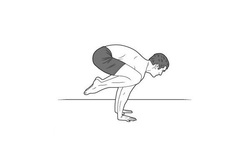
This fun and challenging workshop on the arms ballancing positions is designed to teach you how to do the latter with greater awareness and ease. Students will learn to correctly position above the balance point of the position rather than relying on force.
The overall goal is to teach all the equilibrium positions on the arms, but the emphasis will be on Bakasana in particular. The first part of the workshop is a warm-up for the body to obtain:
Bakasana is the most basic and simple equilibria, with its symmetry and contraction of the body. It 's very centratante, strengthening and symmetrical, brings attention to one point for the mind and balance the body.
This workshop will make you understand the mechanics and the leverage of the balance and make them challenging part of your repertoire. These classes will invigorate, challenge you, and will educate you!
The overall goal is to teach all the equilibrium positions on the arms, but the emphasis will be on Bakasana in particular. The first part of the workshop is a warm-up for the body to obtain:
- Adequate strength in the shoulders, forearms, and abdominal
- Adequate flexibility of the wrists, shoulders, hips and trunk.
Bakasana is the most basic and simple equilibria, with its symmetry and contraction of the body. It 's very centratante, strengthening and symmetrical, brings attention to one point for the mind and balance the body.
This workshop will make you understand the mechanics and the leverage of the balance and make them challenging part of your repertoire. These classes will invigorate, challenge you, and will educate you!

